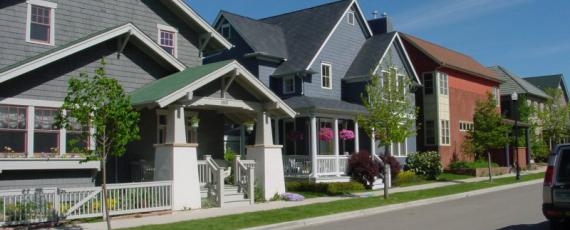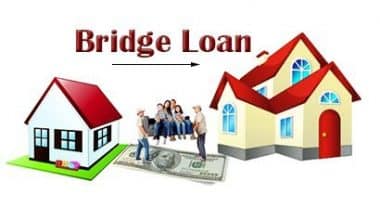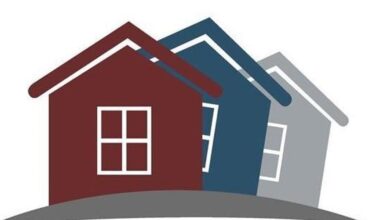PUDs (planned unit developments) are a distinct real estate feature. You own your house and land in a PUD, and you can take advantage of shared amenity features similar to those found in a condo development, such as pools, green spaces, and leisure facilities. While this may appear to be the ideal situation, there are a few things to consider before buying homes in a planned unit development real estate rider. To that end, this article was crafted to explain planned unit development in its fullest nature.
What Is a Planned Unit Development?
A planned unit development (PUD) is a mixed-use residential community that combines the benefits of traditional homeownership with the added conveniences of retail establishments, recreational spaces, and even schools. PUDs are made up of single-family homes, condominiums, or townhomes and are commonly established in suburban or urban locations.
Property owners in PUD communities own both their home and the land on which it is built, and they are typically obliged to join a homeowners’ association (HOA) or other governing body. They pay HOA dues to have access to and maintain the common areas’ facilities and landscaping. The HOA may also establish ground rules for homeowners to follow on subletting, upkeep, parking, and visitors.
Overview
Planned urban development is usually the result of a collaboration between a local authority and developers. In recent years, urban planners have become increasingly interested in recreating pre-modern human societies’ mixed-use orientation. Housing, commerce, and localized industry were all combined in these historic communities.
A community’s nexus was frequently an important natural resource, such as a water source or defensible high ground. A trend toward single-purpose zoning in metropolitan areas occurred as a result of industrialization and modernization. Notably in the second half of the twentieth century. As a result of this trend, planned urban development arose, focusing urban communities on the principles of convenience and efficiency rather than a natural resource or feature.
Homebuyers and renters willing to pay a premium can be attracted by high-end retail and event programming. Theatrical performances and other forms of nightlife can have a similar effect. Finally, planned development allows developers to give urban planners and commercial and residential end-users exactly what they want: efficient and varied use of limited urban space.
What Are the Advantages of a Planned Unit Development?
Property owners benefit from a variety of benefits that are specific to PUD living:
#1. Convenience
Convenience is one of the primary selling features of living in a PUD. These settlements are intended to function as self-contained small towns. PUD residential complexes attempt to make living as convenient as possible by providing access to recreational facilities. Such as swimming pools, tennis courts, and gyms, as well as nearby businesses such as groceries and pharmacies.
#2. Community
These amenities also provide adequate room and opportunities to mingle with your neighbors. PUDs can help to create a close-knit community, which is especially useful to young families and seniors.
#3. Land ownership
People who buy a home in a PUD own both the house and the land it stands on. PUDs are more like traditional homeownership than condo or townhouse ownership since they allow you to own both the house and the land.
#4. Maintenance
PUDs are typically in charge of common space management, ensuring that the community is clean and welcoming. Some PUDs may even maintain the yards of individual unit owners.
What Are the Disadvantages of a Planned Unit Development?
The following are some of the disadvantages of living in a planned unit development:
#1. Fees
The numerous advantages of living in a PUD come at a price. Despite the fact that a PUD may offer a variety of home styles at varied rates to suit your needs. Most require owners to pay monthly HOA fees in addition to property costs to maintain the common facilities and open spaces.
#2. Regulations
The laws and regulations that govern a PUD have a number of advantages that relieve some of the burdens of homeownership. But they may be too restrictive for some potential residents. Although the strictness of these requirements varies for each PUD, some homeowners may find them overbearing. As they can regulate everything from visitor parking to home exteriors. A PUD property may not be for you if you want a brilliantly colored home with a showy landscape.
#3. Space
PUD housing units are frequently placed close together, putting you in close proximity to your neighbors. Some people may love the sense of community that this can engender. While others may prefer to live in an area with plenty of privacy and acreage.
#4. Zoning
One disadvantage of constructing a PUD, from the standpoint of a real estate developer, is that the zoning restrictions are more difficult than regular zoning laws. The combination of residential, business, and recreational spaces might result in additional bureaucratic hurdles, expenditures, and completion time. These zoning laws may have an impact on how mortgage lenders evaluate your loan application and the sort of loan you qualify for.
What Are the Differences Between a Planned Unit Development and an HOA?
A planned unit development and a homeowners’ organization are related to homeownership. But there are several important differences between the two. PUDs are analogous to a self-contained town, having residential and commercial zones and an HOA or equivalent governing organization that requires all inhabitants to be members. A PUD is subject to different zoning rules than other residential communities because it is mixed-use.
HOAs, on the other hand, are self-governing organizations that establish rules and regulations for a specific community as well as oversee maintenance and upkeep. Also, HOAs elect board members from a pool of homeowners to make community decisions and manage the commons areas on a day-to-day basis. HOAs often ask homeowners to pay monthly dues in order to fund the community’s objectives.
What Does It Mean as a Buyer or Seller if Your Home Is in a PUD?
There are a few things to consider when buying a home in a PUD that is different from buying a regular single-family home.
For starters, obtaining finance for a PUD home is more difficult. Your lender will have to take a few extra measures with a PUD loan to guarantee that your PUD is a sound investment. Your lender will check to see whether there are any outstanding HOA dues from residents. If the PUD has sufficient reserves, and if there is adequate insurance coverage. More so, your lender will also confirm that the majority of the properties in your PUD are residential rather than commercial.
You can have trouble getting a loan for the whole amount if your lender discovers any concerns with the PUD, their HOA, or their finances. Financial troubles within the PUD may suggest that house prices in the neighborhood will decline in the future, putting your lender at greater risk.
You should read the fine print and details of the HOA agreement, as well as the potential cost of your monthly HOA fees, before deciding to buy a home in a PUD. Because PUDs are known for having a lot of amenities, your HOA fees will almost certainly reflect this. You’ll want to factor these charges into your total budget because your monthly dues could be pretty expensive.
In a PUD, you are to obey certain restrictions and community rules. Just as you would in most communities that have a homeowners’ association. You’ll want to know what criteria you must follow because some PUD communities are harsher than others. The PUD may, for example, restrict the appearance of a home’s exterior. Including landscaping and décor, or prohibiting certain types of modification.
Is a Planned Unit Development a Good Investment?
A PUD has numerous advantages. You own the house and the land it sits on, and you have access to a variety of facilities that you won’t find in a regular condo or apartment complex. Let alone a standard single-family home.
Because PUDs are their own community with their own homeowners’ organization. You may anticipate a particular degree of service and quality of life. PUDs are responsible for the upkeep and maintenance of amenities, roadways, shared green spaces, and landscaping. You may be eligible for perks such as total lawn care or snow removal in certain PUDs. Allowing you to focus your time and energy on other things.
If you’re on a tight budget, though, a PUD might not be the best option. Depending on the type and breadth of amenities, HOA fees can be quite expensive. You might not want to live in a PUD if you don’t plan on using the majority of the amenities. So, even if a PUD has everything from tennis courts to a posh community poo. If you don’t play tennis or dislike swimming, it might not be worth the extra money.
How are Common Areas Managed in PUDs?
PUD owners, by virtue of their membership in a homeowners association, are entitled to certain rights and easements with regard to the use of common spaces, which are normally owned and controlled by the homeowners association. However, certain PUD proposals provide that each individual homeowner shall possess a proportional interest in the common portions of the development.
Is a PUD Better Than a Condo?
The primary distinction between a condominium and a planned unit development (PUD) is that the owner of a unit in a PUD also owns the lot under the unit, which has been conveyed to them as shown in the recorded Tract Map or Parcel Map, as well as the structure and improvements that have been placed thereon. A condominium, on the other hand, only grants ownership of the unit itself.
Is a PUD a Good Investment?
If you are working with a limited amount of capital, a PUD might not be the greatest investment for you. Depending on the variety and level of amenities provided, HOA fees may be quite pricey. It’s possible that a PUD is not the right choice for you, especially if you don’t intend to make use of the majority of the community’s amenities.
What Is a Planned Unit Development Real Estate
A planned unit development real estate rider guarantees that the borrower will make all payments and fees as specified in the condominium contract. The rider strengthens the contract between the buyer and the condominium or homeowner association by allowing the community to alert the underlying financial institution if the buyer fails to meet the payment commitments set forth in the ownership agreement.
The planned unit development real estate rider switches the payment duty from the owner to the bank holding the unit’s mortgage when a buyer stops paying his condo fees. The bank can then add the unpaid dues to the existing loan after analyzing the situation. As a result of the rider, the community’s owners can intervene and notify the owner’s lender of a default. The community’s instant involvement removes the delays that are often involved with debt collection. As a result, a planned unit development real estate rider frequently expedites the collection process for units that have fallen behind on their payments.
What is PUD in Architecture?
PUD stands for “Planned Unit Development.” Planned Unit Development (PUD) is a type of development as well as the regulatory process that allows a developer to satisfy overall community density and land use goals without being restricted by existing zoning regulations. PUD is referred to by its acronym, which stands for “planned unit development.”
What is the Difference Between a PRD and a PUD?
The planned residential development, sometimes known as a “PRD,” is likely the type of PUD that is the most common. Because PRDs are only permitted to be used for residential purposes, they do not have the flexibility to accommodate a variety of functions, as would be the case with a PUD plan. Nevertheless, just like the PUD, the PRD enables significantly more inventiveness and adaptability in terms of design and layout.
What is a PUD Master Insurance Policy?
In a PUD, the HOA is required to have a property insurance policy that covers all of the community’s common elements, such as fixtures and building service equipment, common property, and supplies. This insurance policy must also cover the HOA’s liability in the event that any of these elements are damaged or destroyed. The HOA needs to be included as the named insured on the PUD’s insurance policy.
What is a Detached PUD?
PUDs will provide the impression of being single-family homes to the vast majority of prospective buyers. For instance, it can be a detached house that has a yard and a garage in addition to all the other features of a single-family home that are important to you. PUDs, on the other hand, have a legal structure that is more analogous to that of condos, despite the fact that they give the impression of being single-family homes.
Planned Unit Development Homes
Planned Unit Development (PUD) is a term that refers to home development that does not adhere to the area’s zoning standards for housing construction. The developer might apply to the local government for authorization to build a housing development that meets different standards. In fact, the developer will become an expert in terms of building designs, street width and lighting, land coverage ratios, and even community green areas or amenities. Planned unit developments may be crowded closer together than typical zoning restrictions permit. But the trade-off may be green space not found in other communities. There may also be retail establishments and eateries on the property.
FAQs
What is considered a planned unit development?
A planned unit development, or PUD, is a collection of single-family homes, sometimes called condos or townhomes, where each homeowner is a member of a homeowners organization (HOA).36
What is an example of PUD?
A community pool, park, playgrounds, tennis courts, basketball courts, workout facilities, hiking trails, a guarded entrance, security, and even community stores, cafes, and dental offices are all examples of PUD benefits.
What is the purpose of a PUD rider?
A planned unit development rider provides community associations the power to notify a bank when an owner stops paying dues, and then the bank holding the unit mortgage has the option of paying the assessment, which will be added to the current unit loan.
{
“@context”: “https://schema.org”,
“@type”: “FAQPage”,
“mainEntity”: [
{
“@type”: “Question”,
“name”: “What is considered a planned unit development?”,
“acceptedAnswer”: {
“@type”: “Answer”,
“text”: “
A planned unit development, or PUD, is a collection of single-family homes, sometimes called condos or townhomes, where each homeowner is a member of a homeowners organization (HOA).36
“
}
}
, {
“@type”: “Question”,
“name”: “What is an example of PUD?”,
“acceptedAnswer”: {
“@type”: “Answer”,
“text”: “
A community pool, park, playgrounds, tennis courts, basketball courts, workout facilities, hiking trails, a guarded entrance, security, and even community stores, cafes, and dental offices are all examples of PUD benefits.
“
}
}
, {
“@type”: “Question”,
“name”: “What is the purpose of a PUD rider?”,
“acceptedAnswer”: {
“@type”: “Answer”,
“text”: “
A planned unit development rider provides community associations the power to notify a bank when an owner stops paying dues, and then the bank holding the unit mortgage has the option of paying the assessment, which will be added to the current unit loan.
“
}
}
]
}






